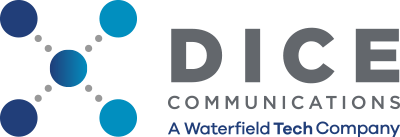
Modern companies can’t do business without technology. The challenge is that technology can fail in so many ways. While security and malware protection is a great place to start, every IT department needs to know what’s going on with its network infrastructure.
An IT assessment helps you create a playbook for high-stakes situations, update the right software, and secure all of your endpoints. The IT assessment checklist is a document that helps you analyze all of the components in your IT infrastructure. It helps you document your current assets, analyze their usage, and make plans to improve your infrastructure.
Why are information technology assessments important?
The ultimate goal of an IT assessment is to see where you’re doing well and which weaknesses you need to address. When you conduct an IT assessment annually, you’ll build a better, stronger, and more resilient business.
IT assessments will also help your business:
- Identify security flaws: No network is perfect. With the threat landscape changing almost daily, an IT assessment checklist helps your organization stay on top of its security. A good IT assessment will analyze your policies, security tools, and employee behavior to identify flaws.
- Stop using resources incorrectly: Errors and inefficiencies are costing you more time and money. An IT assessment ensures you have the right devices, licenses, and user access levels to get work done in the most efficient way possible. For example, you might discover costly oversights like paying for duplicate licenses.
- Get non-IT buy-in: It can be tough talking about IT needs with non-IT staff. When you need the CFO’s buy-in on your IT budget, an IT assessment is a great tool to simplify conversations with non-IT stakeholders.
The best IT assessments are proactive. Plan for security, compliance, and efficiency with annual assessments so you address problems before they interfere with operations.
6 items to include in your IT assessment checklist
You’re likely already performing IT checks in your business. If you want to make your processes better, create a solid IT assessment checklist that addresses the right things. This proactive approach will help you find and fix problems long before they disrupt your business. Add these 6 important items to your IT assessment checklist to stay one step ahead.
1. Current state assessment
How does your system work right now? You need to understand what processes, endpoints, assets, and policies are in place so you can identify opportunities for improvement.
Your current state assessment should look at:
- Company goals: What’s important to your organization? For example, if customer experience is your mission, that means IT needs to give extra attention to customer-facing systems. Make sure your IT approaches match your company’s priorities.
- Existing documentation: Round up all of your SOPs, logs, and other IT documentation. Is anything missing? Is the information current? Is the documentation helpful?
- Compliance: Does your organization have to comply with HIPAA, SOC 2, or other requirements? Understand what responsibilities fall on IT for compliance.
When you conduct a current state assessment, you’ll get a baseline of what you need to accomplish. Essentially, it should explain why you’re doing the assessment and what your team needs to prioritize.
2. Inventory your software and hardware assets
Once you understand your current state, take a detailed inventory of all of the software and hardware in your business. This includes assets like:
- Laptops
- Mobile phones
- Servers
- Routers
- Switches
- Antivirus software
- Access points
- Desktop software
- Operating systems and their versions
- Printers
- Scanners
- Conference room equipment
By inventorying your assets, you’ll quickly realize what assets need to be upgraded, removed, or optimized. Plus, it makes security much easier when you know what you need to secure.
3. Data storage and recovery
An information technology assessment should also look at your data storage and recovery practices. The purpose of this is to understand where and how you store critical data. This part of the checklist should cover:
- Cloud storage: Cloud storage is efficient, but it does come with security concerns. Understand how data moves through the cloud, where you store it, and how you secure this data. You should also determine what data stays on-site and what data belongs in the cloud.
- Disaster recovery: Fire, floods, and natural disasters can destroy your operations. Assess how redundant your systems are in the case of significant disruption. This means analyzing recovery times, roles, and backup policies.
- Backups: Where do you back up your data? How often? Consider backing up your servers at least once a week and building in a few off-site backups.
- Compliance: Do you need to meet backup retention requirements for key data? For example, you need to store payroll data for at least 7 years. From legal transactions to instant messaging, you’re likely on the hook for backup requirements. Make sure your systems align with these compliance requirements.
4. User access and experience
Human activity has a big impact on network infrastructure performance. Your IT assessment checklist should determine how users access your systems and how you can improve their overall experience.
Ask other employees how they use the system right now. Get a feel for what they enjoy and what changes they would like to see.
You should also assess your business’s:
- Onboarding practices: Does your organization have solid IT training for newcomers? Or ongoing training for existing employees? Have a plan for ongoing employee training so your business can fend off cyber attacks more easily.
- Password strength: You don’t want employees using “password” as their password. Your network infrastructure should create secure, complex passwords for your team. Use a password manager and password generator for your entire team to maximize security without harming their experience.
- Inefficiencies: Are users working in the most efficient way possible? For example, does your business require a lot of manual data entry? It’s IT’s responsibility to identify workflow inefficiencies and find a way to improve collaboration with technology.
5. Upgrade schedule
When you buy software or hardware, you don’t just have to worry about the upfront cost. Every asset requires upgrades and maintenance. This section of your information technology assessment should look at:
- Which assets need upgrades.
- The upgrade or maintenance schedule for every asset.
- The cost of maintenance or upgrades per asset and as a whole.
- The costs associated with onboarding new employees, devices, or workstations.
6. Gap analysis
After assessing your infrastructure, you should perform a gap analysis. This identifies areas where you can improve or strengthen your network infrastructure. A gap analysis helps you bridge the gap between where you are today and where you need to be. This way, you conclude the IT assessment with an actionable plan for addressing any issues.
Execute improvements in less time
IT assessment checklists are just one way to analyze and improve your business. Think of it as spring cleaning for your IT infrastructure. Your in-house team can do the assessment, but executing on your gap analysis often requires more resources and time than you have available.
Learn More About Information Security
Security isn’t a one-and-done solution. Understanding the risks your business faces is the first step to protecting it. Dice Security Awareness training helps you and your organization understand:
- Technology and threats to information
- Evolving systems and networks
- Basic security measures
Download the training compiled by the experts in the field and learn more about how to protect your assets.


